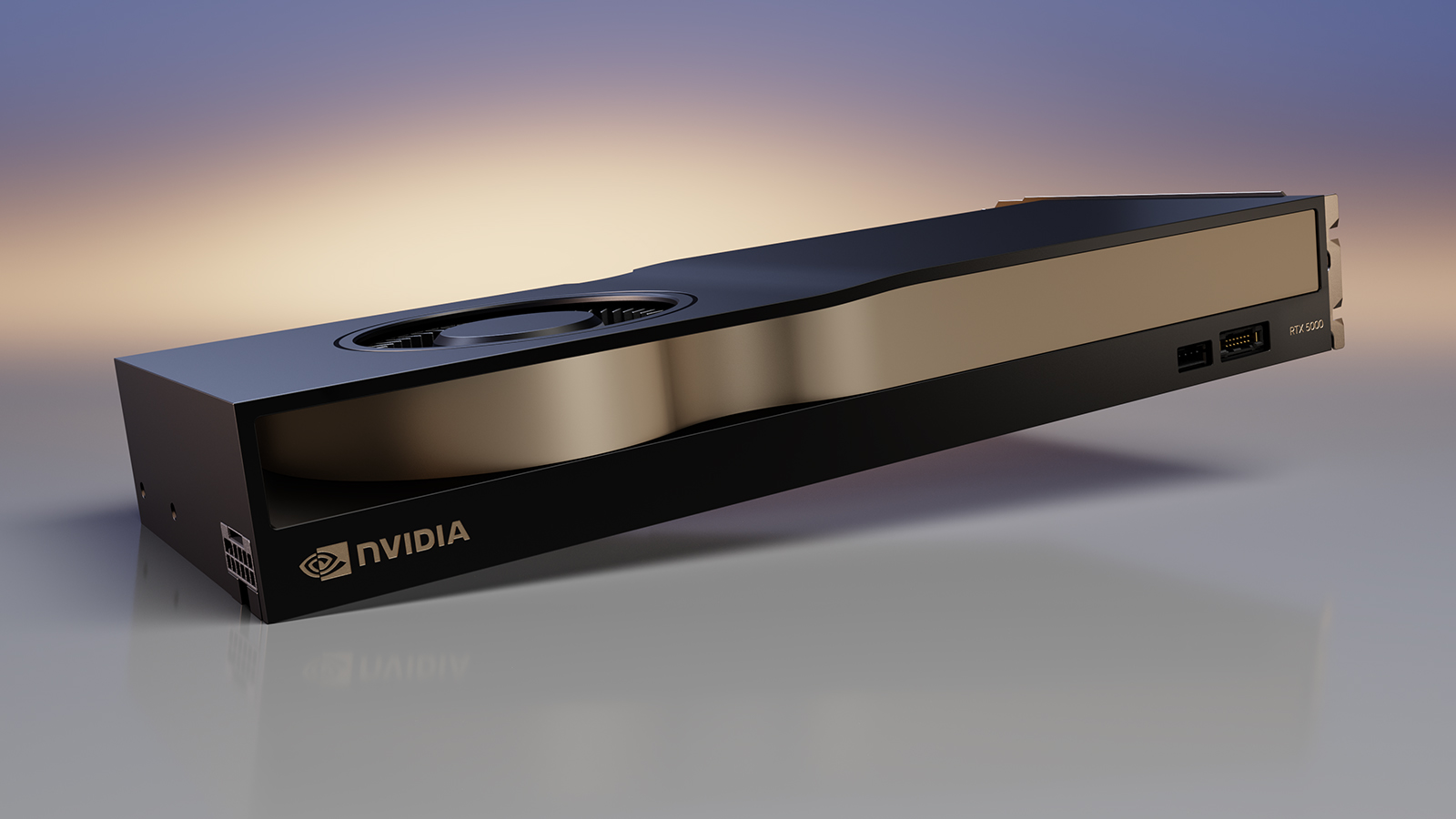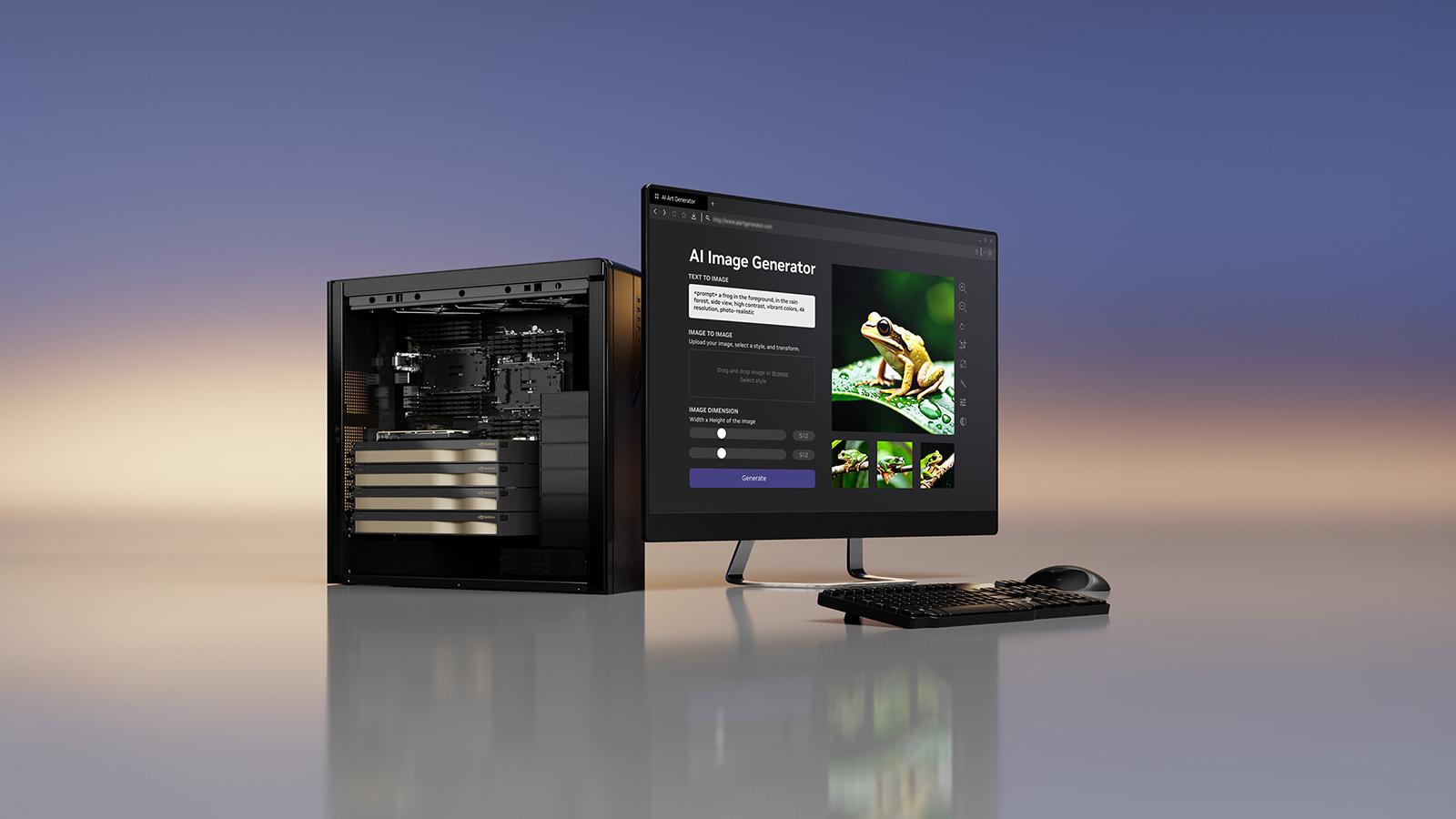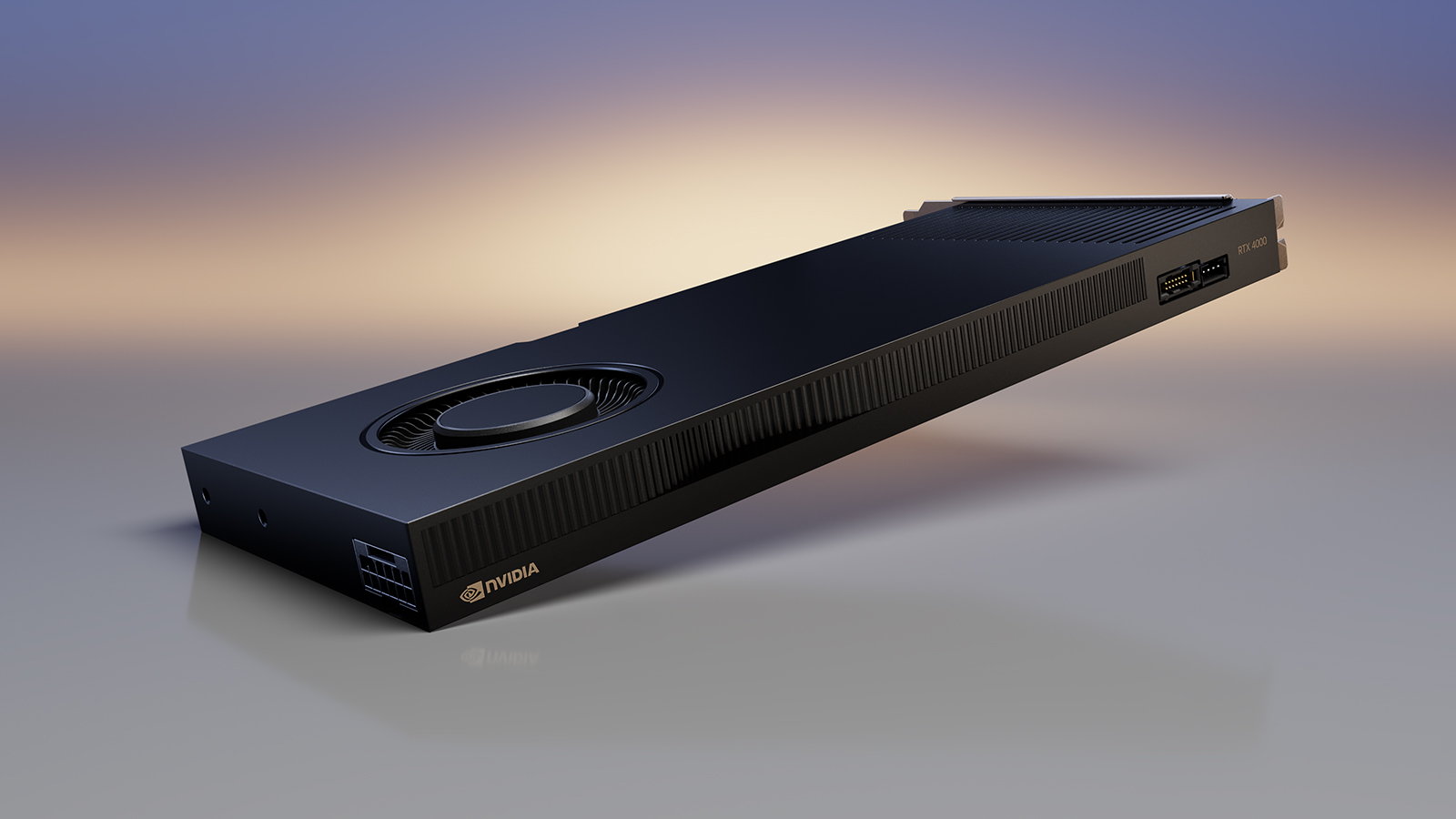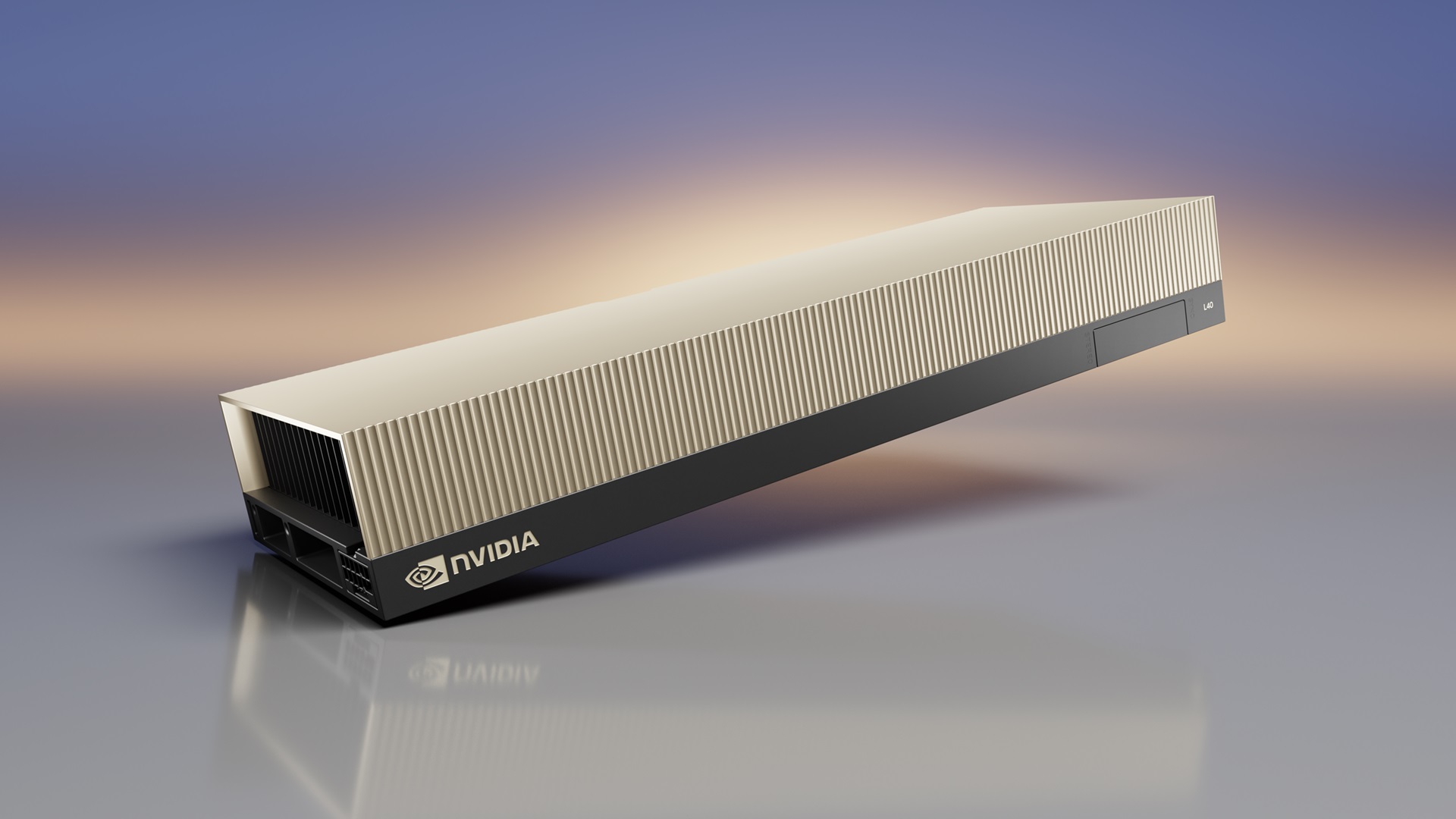Nvidia Unveils RTX 4000, 5000 Workstation GPUs, Along with New Datacenter Card
Nvidia has added four SKUs to its line of professional GPUs.

Nvidia has introduced three high-performance professional graphics cards based on the Ada Lovelace architecture for workstations as well as a server-grade grade professional board that can be used both for remote graphics and light AI applications. The introduction completes transition of Nvidia's ProViz family of high-performance products to its latest Ada Lovelace architecture.
To address performance-demanding professional graphics applications, such as computer aided design and digital content creation, Nvidia add three new products: the RTX 4000 20GB, the RTX 4500 24GB, and the RTX 5000 32GB boards based on the Ada Lovelace architecture. In addition, Nvidia is rolling out its L40S datacenter board with 48GB of memory.
| Card | MSRP | GPU | VRAM | Cuda Cores | Availability |
|---|---|---|---|---|---|
| RTX 4000 | $1,250 | AD104 | 20GB | 6,144 | September |
| RTX 4500 | $2,250 | AD104 | 24GB | 7,680 | October |
| RTX 5000 | $4,000 | AD102 | 32GB | 12,800 | Now |
| L40S | ? | AD102 | 48GB | 18,176 | Fall |
The new Nvidia RTX 4000 20GB workstation graphics card largely mimics the RTX 4000 SFF product released several month ago, but it uses a full-height PCB albeit comes with a single-slot cooling system and is rated for 130W. The part is powered by the AD104 GPU with 6144 CUDA cores that is clocked higher compared to the SFF variant and thus delivers up to 26.7 FP32 TFLOPS of compute throughput, which is comparable to compute performance of Nvidia's GeForce RTX 4070. This board will offer higher performance than the RTX 4000 SFF for the same price of $1,250 in September.
The green company is also rolling out its Nvidia RTX 4500 24GB featuring the AD104 GPU with 7,680 CUDA cores that offers up to 39.6 FP32 TFLOPS of compute performance, which is on par with the GeForce RTX 4070 Ti. The ProViz graphics card is equipped with a dual-slot cooling system with a blower fan and is rated for up to 210W of power. The product is set to be available in October for the price of $2,250.
Yet another graphics cards that is being rolled out today is the Nvidia RTX 5000 32GB based on the severely cut-down AD102 graphics processor with 12,800 CUDA cores that delivers compute performance of 65.3 FP32 TFLOPS. This unit is positioned to sit below the flagship RTX 6000 Ada and the whopping performance difference between the two parts implies that over time Nvidia might offer a solution that will sit between these models. In the meantime, Nvidia will have its RTX 5000 32GB for $4,000 and RTX 6000 48GB Ada for $6,800.




The new workstation boards will be used by companies like Boxx, Dell, HP, Lenovo, and Lambda in their upcoming workstations this fall. In addition, these boards will be available from Nvidia's resellers, such as Arrow and Ingram from such AIB suppliers as Leadtek, PNY, and Ryoyo,

But as there are professionals who use remote workstations, Nvidia is also rolling out its L40S Ada datacenter card that uses the AD102 GPU with 18,176 CUDA cores that delivers a whopping 91.6 FP32 TFLOPS, which is in line with performance of the RTX 6000 Ada. The L40S Ada will be first used in Nvidia's OVX servers used for graphics AI, and video processing, but eventually they will likely end up in different machines as well. While the L40S Ada is clearly a datacenter product with a passive cooling solution, it still has display outputs, so it can be installed into a workstation assuming that there is enough airflow inside or a special blower attached to the board.
Get Tom's Hardware's best news and in-depth reviews, straight to your inbox.
"As generative AI transforms every industry, enterprises are increasingly seeking large-scale compute resources in the data center," said Bob Pette, vice president of professional visualization at NVIDIA. "OVX systems with NVIDIA L40S GPUs accelerate AI, graphics and video processing workloads, and meet the demanding performance requirements of an ever-increasing set of complex and diverse applications."

Anton Shilov is a contributing writer at Tom’s Hardware. Over the past couple of decades, he has covered everything from CPUs and GPUs to supercomputers and from modern process technologies and latest fab tools to high-tech industry trends.
-
PlaneInTheSky Of the 4 people I know who used an AI platform, 0 still use it. The reasons come down to unreliability and unpredictability.Reply -
10tacle Replyevdjj3j said:Nvidia RTX 4000 20GB is the card the 4070 should have been.
The history of the x70 vs. x80 series and VRAM + memory bandwidth since the GTX 600 gen:
GTX 670 2GB 256-bit
GTX 680 2GB 256-bit
GTX 770 2GB 256-bit
GTX 780 3GB 384-bit
GTX 970 4GB (ahem 3.5GB) 256-bit
GTX 980 4GB 256-bit
GTX 1070 8GB 256-bit
GTX 1080 8GB 256-bit
RTX 2070 8GB 256-bit
RTX 2080 8GB 256-bit
RTX 3070 8GB 256-bit
RTX 3080 10GB/12GB 320-bit
RTX 4070 12GB 192-bit
RTX 4080 16GB 256-bit
RTX 4000 20GB 160-bit
Based on historical trend and three generations of the RTX x70 line being at 8GB VRAM, the RTX 4070 should have launched with a 256-bit bus and 16GB memory right alongside the 4080. I don't know what Nvidia is thinking these days, but they are confusing the consumer more and more with each new generation - and will there or will there not be a Ti series variant for mid-range? I wonder what they'll turn upside down with next year's RTX 5000-series! -
Phaaze88 Reply
Munny, and keeping shareholders happy? Those are the #1 goals of a publicly traded company, right?10tacle said:I don't know what Nvidia is thinking these days, but they are confusing the consumer...
A confused customer is more likely to overspend, so more money for them.
Arc and Radeon are currently playing catch up. -
Exploding PSU I'm obviously not their target customer, but can I just say, those GPUs are drop dead gorgeous.Reply